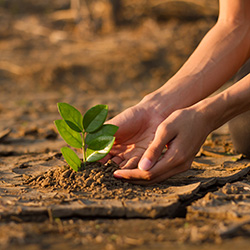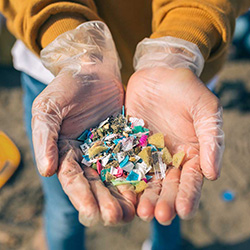Observed on October 16 each year, World Food Day (WFD) is dedicated to promoting global awareness of hunger, and advocating for actions that support the future of food production. In 2023, WFD’s theme is water, an essential element in the production of food, animal feed, and biofuel. Led by the Food and Agriculture Organization of the United Nations, the annual campaign aims to highlight the critical role of water in food production, emphasizing the need to reduce water wastage and improve water resources to secure the future of food, people, and the planet.1 In this article, we briefly explore how water can impact human health and examine the impacts of climate change and the environment on the availability of safe water.
Water and Human Health
While approximately 71% of the Earth’s surface is covered by water3, only up to 2.5% of this water is useable freshwater.1 Each day, the average human body requires around two liters of water, but the production of one person’s daily food needs consumes about 3,000 liters of water.4
Up to 60% of the human body consists of water, including approximately 90% of blood, 83% of the lungs, 79% of muscles and kidneys, 73% of the brain and the heart, 64% of the skin, and even 31% of bones. Dehydration, when the body lacks adequate water, causes symptoms such as headache, exhaustion, dizziness, constipation, altered blood pressure, and dark urine.3
One in three people worldwide lack access to safe drinking water. Many children may walk six kilometers or more every day to fetch water for their families.5 This lack of access to clean water increases the risk of diseases such as cholera, diarrhea, dysentery, polio, and typhoid.1 Shockingly, around one million people die each year from diarrhea due to the consumption of contaminated water, poor sanitation, and/or lack of hand hygiene.6
Water and Climate Change
Extreme weather events, such as floods, are making useable water for human consumption scarcer. Currently, 1.2 billion people are at risk of floods, and this number is expected to rise to 1.6 billion by 2050.1
Recent devastating floods in Derna, Libya caused by Storm Daniel in September 2023 resulted in thousands of fatalities and left thousands more in urgent need of food and drinking water. Additionally, the floods impacted an estimated 3,000 hectares of cropland, destroying the production of grains and grazing pasture for cattle, goats, and sheep.7
Another significant consequence of climate change is ocean acidification, a reduction in ocean pH due to the uptake of carbon dioxide (CO2) from the air. Over the last century, CO2 levels in the atmosphere have increased due to deforestation and the burning of fossil fuels.8 These changes in the oceans directly impact sea life, including fish and shellfish, which many people rely on as a food source worldwide.






